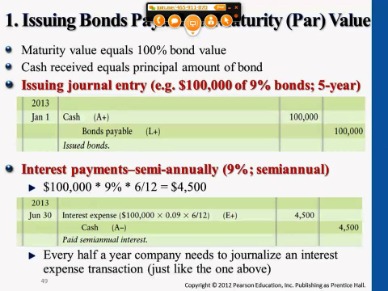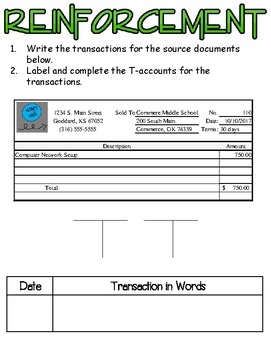
You can sync financial accounts to easily import transaction history, track expenses, double-check transactions for accuracy, and generate important financial statements. Using a comprehensive bookkeeping software program often becomes easier over time. The best bookkeeping software syncs with your business bank account and payroll systems so that you’re easily able to import and export transaction history. We’ll cover some of the best business bookkeeping software options a little later. Accounting or bookkeeping software is a good middle-of-the-road option, both in terms of how much hands-on bookkeeping you want to do and how much you want to spend on accounting software.
Use bookkeeping software
- Understanding accounting basics can help you keep your business on the right path.
- As a business owner, the thought of doing accounting for your business may be more intimidating than the prospect of owning a business.
- Join millions of self-starters in getting business resources, tips, and inspiring stories in your inbox.
- Still, small business accounting can be a challenge for leaders without a financial background.
- Our accounting tips can get you started on your way to assessing your finances.
Pick a day to process and mail your invoices and another date to follow up on aged accounts receivables. Extend credit on moderate terms, if needed and make sure to document everything to pursue payment through a collection agency or the court. Take some time to set up an invoicing system, including tracking the work completion, deciding the frequency of invoicing, defining payment methods and creating professional-looking invoices. Note that you’ll need to pay some payroll taxes, such as FICA taxes, to the IRS monthly or sem-weekly, depending on the amount you withhold. However, for FUTA taxes, deposits are typically due quarterly, and you’ll file your FUTA return (Form 940) annually.
• Create Profit and Loss Statements
According to the NSBA Small Business Taxation Survey, filing and completing their federal income tax returns is one of the top concerns for small business owners. The accounting tips for small businesses can help you figure out long-term goals, ride financial ups and downs and increase your profits. Moreover, efficient bookkeeping strategies can help you work in process inventory example stay out of trouble with the IRS. Note that you may need to make quarterly estimated tax payments if you expect to owe $1,000 or more when filing your annual tax return. If you have employees, you likely need to run payroll weekly, but your pay period may also fall into a different category, such as bi-weekly or semi-monthly. You’ll want to process payroll on your set dates and research your payroll tax requirements, which can differ for each business.
Set Up a Chart of Accounts
The chart of accounts is a list of accounts in your general ledger that will be used to record financial transactions. You might choose to use document management software to keep track of key financial information and statements. You’ll want to periodically back up your files and ensure that you’re adhering to security protocols so your information isn’t compromised. For example, if you need to save a copy of a document separately from other files, you may put it in its password-protected folder inside your document management software.

What Types of Records Do Small Businesses Need to Keep?
But if you plan on being the only user, you can download this small business accounting tax reduction letter application anytime at no cost. Both the cash account and the accounts receivable account are assets. Because we’re increasing the bank balance, we enter the $200 as a debit to the Cash account, while we credit the accounts receivable account for $200 because the balance will decrease. There are numerous software options for small businesses, with QuickBooks and FreshBooks being two of the most popular. When deciding which software program to use for accounting, it helps to first consider what your business needs.
A user-friendly option for small business accounting, FreshBooks makes it easy to track income and expenses and includes a self-employed version just for you. Creating your own small business might be one of the hardest things you ever do—but we have complete confidence that you can handle it. When you stay on top of your bookkeeping and accounting processes, you empower yourself to make wise financial decisions. With these basic accounting tips for small-business owners under your belt, we’re sure you have the tools you need for small-business success.
A small business owner should have a budget for projected revenue and expenses, then check it periodically against actual results. Budgeting helps small businesses analyze operations to improve cost efficiency, as well as find possible opportunities for expansion. Also, keep a close eye on outstanding customer payments (a.k.a. accounts receivable). Slow-paying customers can impact your ability to pay your own bills, and the earlier you can identify problems in collecting payments, the sooner you can resolve them. Consider sending a reminder the day before an invoice is due or the moment it becomes past due.
You can use an accounts receivable aging report for a quick view of outstanding customer payments. The beginning of the month is a good time to send overdue reminder statements to customers, clients, and anyone else who owes you money. With a little bit of preparation, even novices will be able to take on bookkeeping or accounting tasks for their business. Whether you choose the manual method or opt for accounting software, there are tons of accounting tools available for you to take advantage of. The importance of accounting for small businesses can’t be underestimated.
Start with an unadjusted trial balance, which can help locate any out-of-balance accounts. The majority of your financial transactions will have to do with income and expenses. Knowing quarterly tax calculator how to handle these two items will ensure that your business runs smoothly.
